Magnetophoretic circuits: A review of device designs and implementation for precise single-cell manipulation
- PMID: 37355317
- PMCID: PMC10317203
- DOI: 10.1016/j.aca.2023.341425
Magnetophoretic circuits: A review of device designs and implementation for precise single-cell manipulation
Abstract
Lab-on-a-chip tools have played a pivotal role in advancing modern biology and medicine. A key goal in this field is to precisely transport single particles and cells to specific locations on a chip for quantitative analysis. To address this large and growing need, magnetophoretic circuits have been developed in the last decade to manipulate a large number of single bioparticles in a parallel and highly controlled manner. Inspired by electrical circuits, magnetophoretic circuits are composed of passive and active circuit elements to offer commensurate levels of control and automation for transporting individual bioparticles. These specifications make them unique compared to other technologies in addressing crucial bioanalytical applications and answering fundamental questions buried in highly heterogeneous cell populations. In this comprehensive review, we describe key theoretical considerations for manufacturing and simulating magnetophoretic circuits. We provide a detailed tutorial for operating magnetophoretic devices containing different circuit elements (e.g., conductors, diodes, capacitors, and transistors). Finally, we provide a critical comparison of the utility of these devices to other microchip-based platforms for cellular manipulation, and discuss how they may address unmet needs in single-cell biology and medicine.
Copyright © 2023 Elsevier B.V. All rights reserved.
Conflict of interest statement
Declaration of competing interest The authors declare that they have no known competing financial interests or personal relationships that could have appeared to influence the work reported in this paper.
Figures

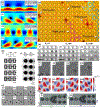
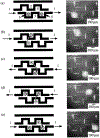

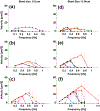

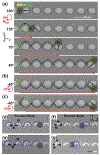

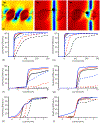



Similar articles
-
Synchronous control of magnetic particles and magnetized cells in a tri-axial magnetic field.Lab Chip. 2021 May 18;21(10):1998-2007. doi: 10.1039/d1lc00097g. Lab Chip. 2021. PMID: 34008644
-
Magnetophoretic circuits for digital control of single particles and cells.Nat Commun. 2014 May 14;5:3846. doi: 10.1038/ncomms4846. Nat Commun. 2014. PMID: 24828763
-
Magnetophoretic capacitors for storing single particles and magnetized cells in microfluidic devices.Biomicrofluidics. 2022 Aug 16;16(4):044110. doi: 10.1063/5.0101907. eCollection 2022 Jul. Biomicrofluidics. 2022. PMID: 35992640 Free PMC article.
-
A review of digital microfluidics as portable platforms for lab-on a-chip applications.Lab Chip. 2016 Jul 7;16(13):2376-96. doi: 10.1039/c6lc00387g. Epub 2016 Jun 8. Lab Chip. 2016. PMID: 27272540 Review.
-
Dielectrophoresis for bioparticle manipulation.Int J Mol Sci. 2014 Oct 10;15(10):18281-309. doi: 10.3390/ijms151018281. Int J Mol Sci. 2014. PMID: 25310652 Free PMC article. Review.
Cited by
-
Single-Cell RNA Sequencing in Organ and Cell Transplantation.Biosensors (Basel). 2024 Apr 11;14(4):189. doi: 10.3390/bios14040189. Biosensors (Basel). 2024. PMID: 38667182 Free PMC article. Review.
-
Characterization of AI-enhanced magnetophoretic transistors operating in a tri-axial magnetic field for on-chip bioparticle sorting.Sci Rep. 2024 Oct 8;14(1):23381. doi: 10.1038/s41598-024-74761-2. Sci Rep. 2024. PMID: 39379453 Free PMC article.
-
Simultaneous and independent topological control of identical microparticles in non-periodic energy landscapes.Nat Commun. 2023 Nov 18;14(1):7517. doi: 10.1038/s41467-023-43390-0. Nat Commun. 2023. PMID: 37980403 Free PMC article.
-
From an obliquely falling rod in a viscous fluid to the motion of suspended magnetic bead chains that are driven by a gradient magnetic field and that make an arbitrary angle with the magnetic force vector: A Stokes flow study.PLoS One. 2024 Apr 16;19(4):e0301852. doi: 10.1371/journal.pone.0301852. eCollection 2024. PLoS One. 2024. PMID: 38625980 Free PMC article.
References
Publication types
MeSH terms
Grants and funding
LinkOut - more resources
Full Text Sources
Miscellaneous

